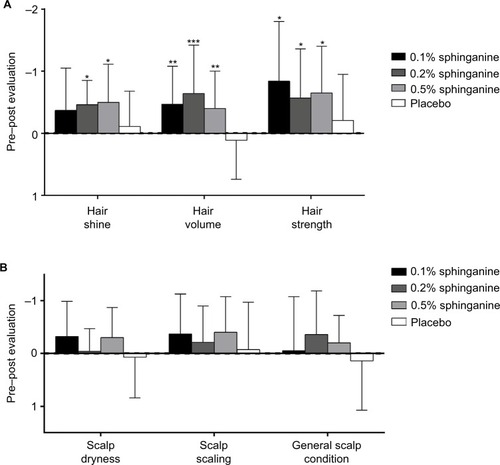Figures & data
Figure 1 HBD2 gene expression in normal human epidermal keratinocytes after 72-hour treatment with 0.00002% sphinganine measured by qRT-PCR.
Abbreviations: qRT-PCR, quantitative real-time polymerase chain reaction; DMSO, dimethyl sulfoxide.
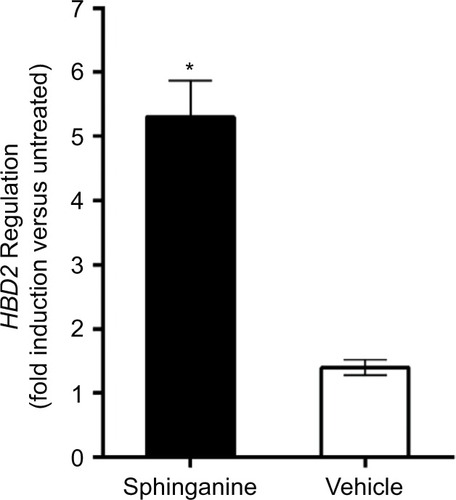
Figure 2 HBD2 protein expression in human living skin explants.
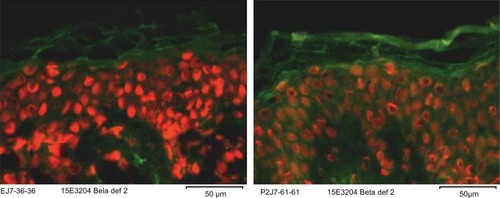
Figure 3 Effect of sphinganine on hair loss in males and females.
Abbreviation: w, week.
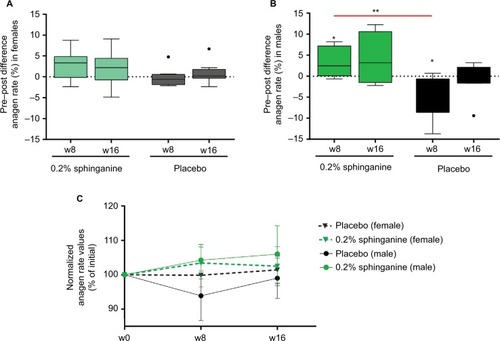
Figure 4 Dose-dependent effect of sphinganine in male.
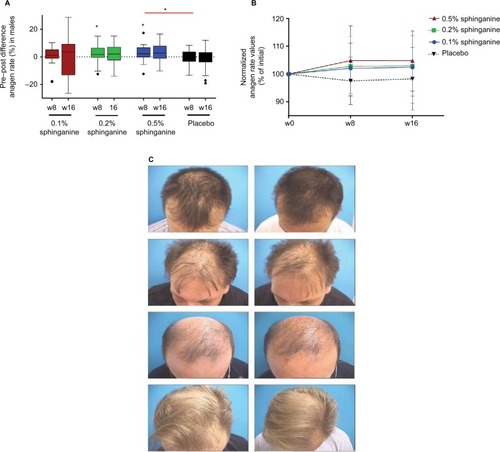
Table 1 Test subjects’ characteristics at inclusion and descriptive statistics of anagen hair rates, in percentage, of dose-dependent efficacy study
Table 2 Anagen hair rates, in percentage, for each individual test subject of dose-dependent efficacy study
Figure 5 12-Month extension study with three selected “high-responder” test subjects.
Abbreviation: m, month.
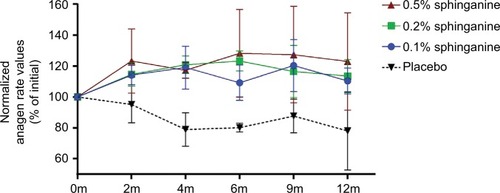
Figure 6 Expert evaluation on hair quality (A) and scalp health (B).
